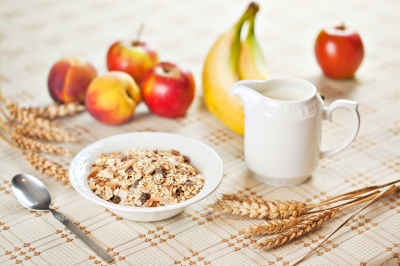Types of Blood Pressure Medications
 Many high blood pressure medications are available. Most options fall within these eight categories.
Many high blood pressure medications are available. Most options fall within these eight categories.
Diuretics
You may also hear diuretics called “water pills”. They increase the elimination of sodium and water by the kidneys. This decreases blood vessel fluid volume, which reduces pressure against artery walls, thereby lowering blood pressure.
The three classes of diuretic drugs include thiazide, loop, and potassium-sparing.
Examples of diuretics include:
- Chlorothiazide (Diuril)
- Hydrochlorothiazide (Microzide)
- Furosemide (Lasix)
- Bumetanide
- Amiloride
- Eplerenone (Inspra)
Beta-blockers
This drug category may also be called beta-adrenergic blocking agents. Beta-blockers inhibit the effects of the hormone epinephrine (aka adrenaline), resulting in a slower, less forceful heartbeat. Beta-blockers can also promote vasodilation (i.e. widening of the blood vessels). These two actions results in reduced blood pressure.
Examples of beta-blockers include:
- Acebutol (Sectral)
- Atenolol (Tenormin)
- Metoprolol (Lopressor, Toprol-XL)
Where should heart rate after exercise fall?

Heart rate after exercise may be used as an indicator of your heart fitness.
Normal resting heart rate
According to the National Institute of Health, normal average resting heart rate should be:
- 60 – 100 beats per minutes for children 10 years and older, as well as adults/seniors
- 40-60 beats per minute for well-trained athletes
Target heart rate during exercise
For moderate intensity activities your target heart rate is 50 – 69% maximum heart rate. For vigorous activity levels your target heart rate is 70-85% maximum heart rate.
To calculate your target heart rate subtract your age from 220. This gives you your maximum heart rate. Now, multiple your maximum heart rate by 0.5 and 0.69 to obtain your target heart rate range for moderate intensity activities. Multiply your maximum heart rate by 0.7 and 0.85 to obtain your target heart rate range for vigorous activities.
Depending on your goal intensity – moderate vs. vigorous – your heart rate should fall within your target heart rate range during activities.
If you are typically inactive, set your goal for the lower end (50-60% maximum heart rate) and work your way up over time.
There are blood pressure medications that lower maximum heart rates. Discuss with your doctor if you currently take blood pressure medications. Your target heart rate zone may need to be adjusted.
Continue reading
Is it now considered okay to eat saturated fat from butter and tropical oils?
![saturated-fat[1]](https://www.lisanelsonrd.com/wp-content/uploads/2016/07/saturated-fat1.jpg) It’s no wonder so many of us are confused about healthy eating. Even the nation’s dietary experts keep changing their mind about what we should eat and what we should avoid. We asked USC School of Pharmacy Research Professor Roger Clemens to help remove some of the confusion surrounding healthy fats.
It’s no wonder so many of us are confused about healthy eating. Even the nation’s dietary experts keep changing their mind about what we should eat and what we should avoid. We asked USC School of Pharmacy Research Professor Roger Clemens to help remove some of the confusion surrounding healthy fats.
Q: What are the latest dietary guidelines regarding fat and cholesterol?
Dr. Clemens: The 2015 Dietary Guidelines Advisory Committee Scientific Report states that cholesterol is no longer a nutrient of concern. The available evidence shows no appreciable relationship between consumption of dietary cholesterol and serum cholesterol. This is consistent with the conclusion of the American Heart Association and American College of Cardiology report.
Q: Can you explain this change in thinking over the past several decades?
Dr. Clemens: Nutritional science is dynamic. In the 1980s, the Dietary Guidelines suggested consumers avoid too much total fat and saturated fat. Over time, total fat guidelines have been upwardly adjusted with the 2010 Guidelines suggesting diets with up 35 percent of daily calories from fat. The 2015 executive summary suggests no upper limit for total fat consumption. Saturated fat guidelines have similarly evolved and now suggest including up to 10 percent in a healthy diet, and replacing saturated fat with polyunsaturated and mono-unsaturated fat. This thinking may still be changing, however. Current evidence does not clearly support cardiovascular guidelines that encourage high consumption of polyunsaturated fatty acids and low consumption of total saturated fats.
Continue reading
4 Reasons Why You Need More Fiber
 How many grams of fiber do you consume daily?
How many grams of fiber do you consume daily?
Most Americans consume half the recommended dietary intake of 25 grams (women) to 38 grams (men) of fiber daily for adults 50 years or younger. Over the age of 50, women should consume 21 grams of fiber and men 30 grams per day.
There are two types of fiber.
Soluble fiber turns to a gel during digestion. Sources of soluble fiber include oats, oatmeal, nuts, seeds, beans, peas, lentils, and some fruits and vegetables (i.e. oranges, apples, carrots).
Insoluble fiber is not digested. It adds bulk to the stool and helps food move through the stomach and intestines. Sources of insoluble fiber include vegetables, whole-grains, and wheat bran.
A diet high in fiber is connected to many health benefits.
- Lower cholesterol levels
Boosting fiber intake from whole-grain products leads to a slower build-up of arterial plaque. Studies also find soluble fiber to protect against atherosclerosis, which is this build-up of plaque in the arterial walls.
Dietary fiber also binds to LDL cholesterol during digestion, resulting in lower LDL cholesterol levels, without decreasing HDL cholesterol levels.
Continue reading
Safe Exercise for Heart Disease
 Exercise is beneficial for everyone, even those who have heart disease or have had a heart attack. Regular exercise can strengthen your heart, promote quicker recovery, and reduce dependence on medication.
Exercise is beneficial for everyone, even those who have heart disease or have had a heart attack. Regular exercise can strengthen your heart, promote quicker recovery, and reduce dependence on medication.
Heart benefits of exercise include:
- Lower blood pressure
- Increased HDL cholesterol levels
- Reduced triglycerides
- Decreased LDL cholesterol levels
- Reduced symptoms of heart failure
- Improved circulation
- Stronger heart muscle
- Blood sugar control
- Weight loss
- Reduced angina
However, you do need to be cautious before starting an exercise routine if you have heart disease or have had a heart attack.
Discuss with your doctor first
It’s especially important to discuss exercise with your doctor if you recently had a heart attack, are experiencing chest pain/pressure or shortness of breath, have diabetes, or recently had a heart procedure.
Some questions to ask your doctor include…
Continue reading
Hidden Calories: Watch out!
There are some changes you may make in an attempt to be healthier than can actually be sabotaging your weight loss efforts. Let’s discuss some hidden calories that may hide in some supposedly “healthy” choices.
Bagels and Muffins
Muffins and bagels have changed drastically over the years. In the past, if you grabbed a muffin at your local coffee shop they would’ve been about the size of a tennis ball. Nowadays muffins are closer to softball size, while bagels have increased an average of 4-6 inches in diameter.
The increased size equals a dramatic calorie increase. One standard muffin or bagel can provide 400-600 calories.
If you’re in a hurry and the only option is to grab breakfast on the run, choose to eat half the muffin or bagel and save the rest for another day.
Salads
Just because it’s a salad doesn’t mean it’s the best choice on the menu.



